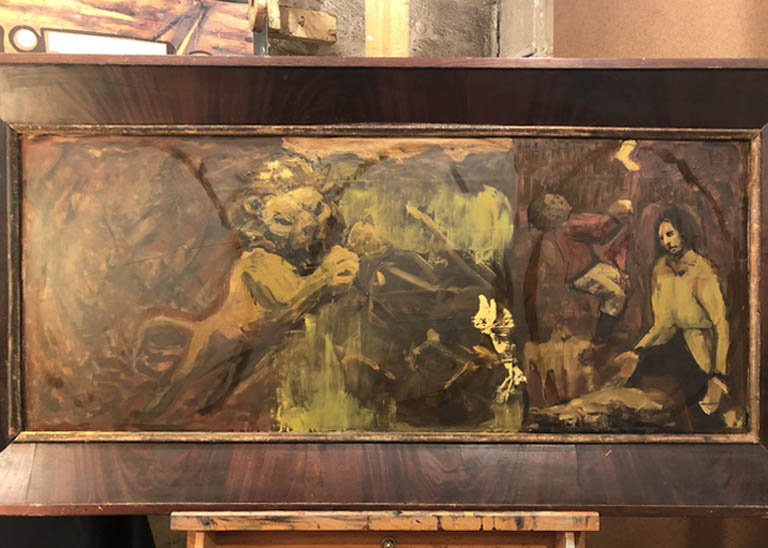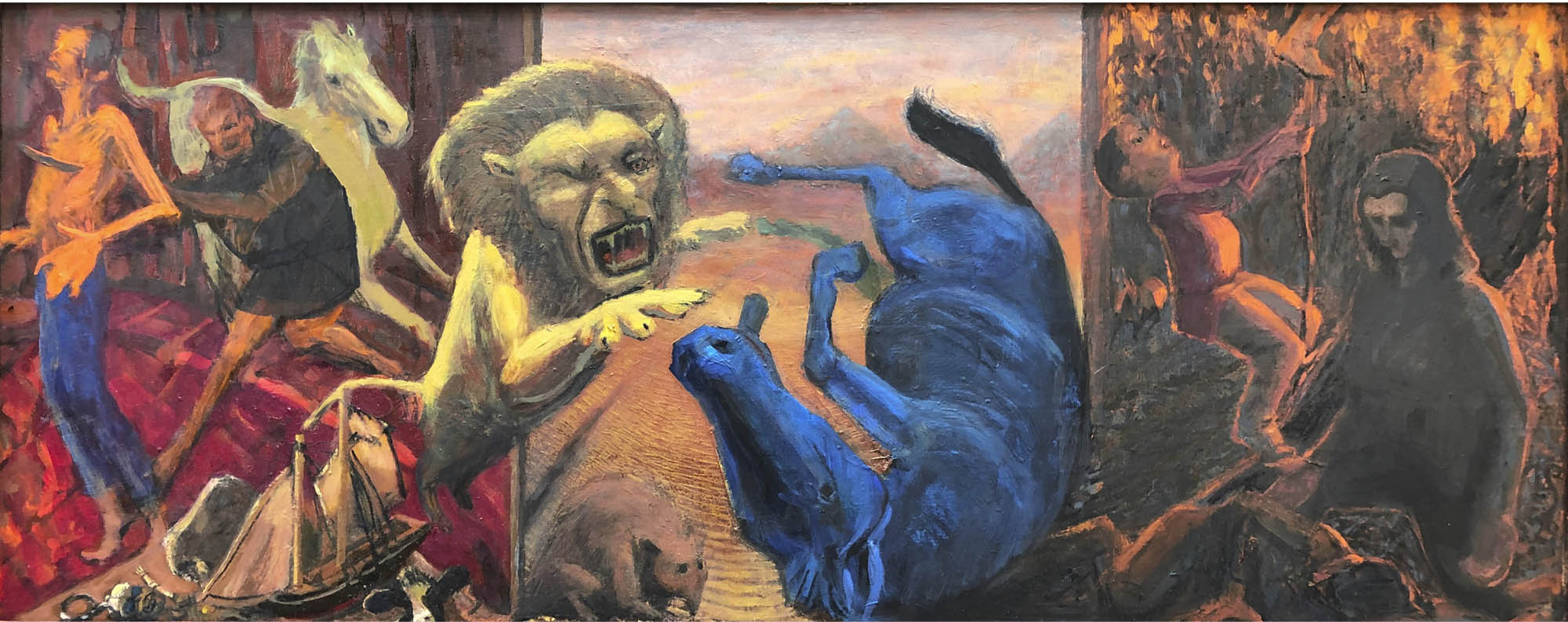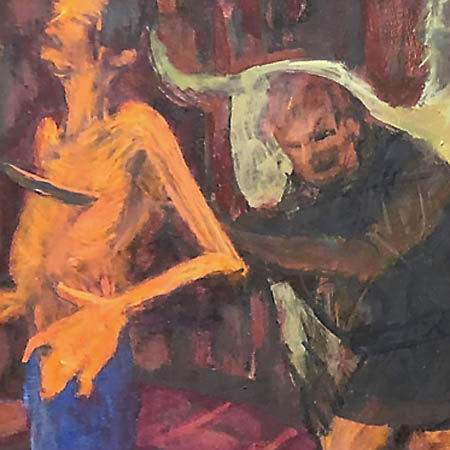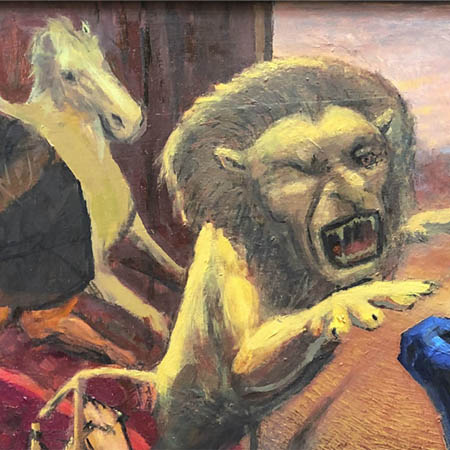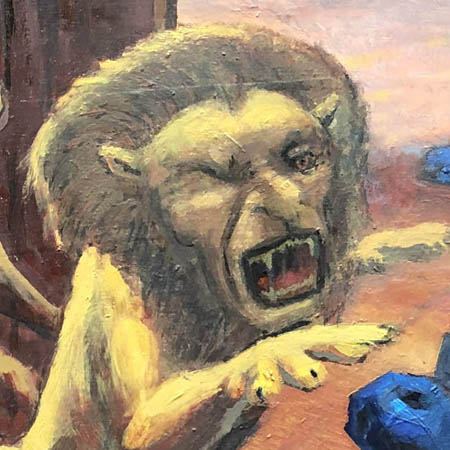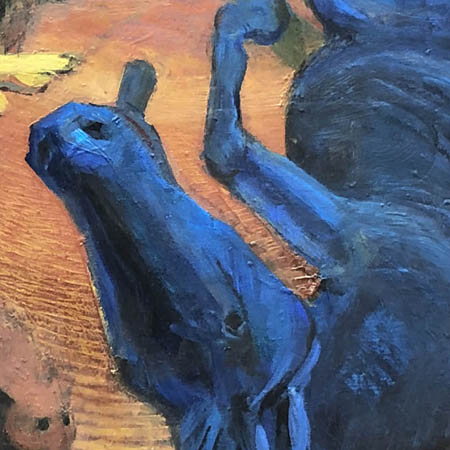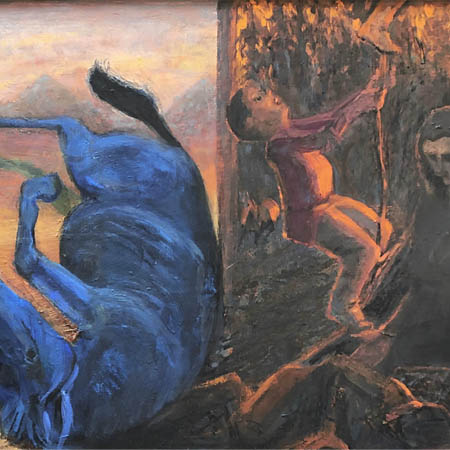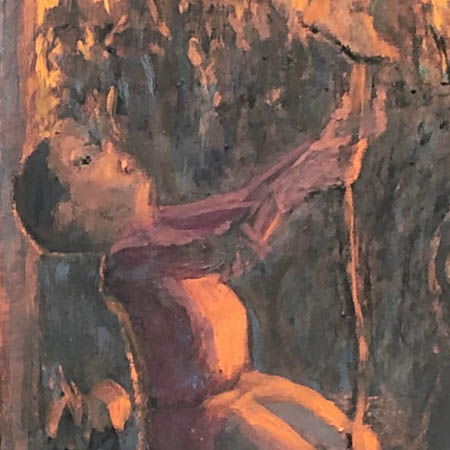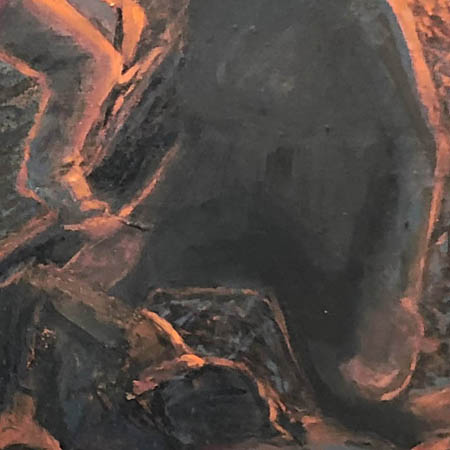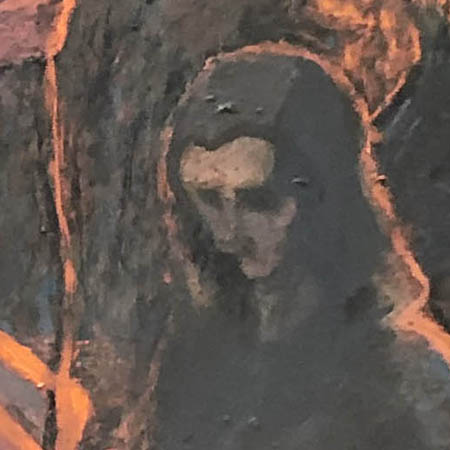Lion and Horse
oil on panel, 14″ x 33″, 2021
Perhaps we enjoy not having all the answers. Indeed, this may be the whole point … in order to read with, rather than against these texts, we must let go of our tendency to think in the usual two-dimensional, linear way that leads to only one correct answer; rather, we are invited to think beyond two dimensions to embrace multiple, contradictory truths which, after all, better reflect reality.
–Michael Heyman, The Tenth Rasa
The idea for the Lion and Horse panel came from the Ezekiel panel in the Dura-Europos synagogue. Part of the old wall painting’s appeal for me is its mystery. Like I heard someone say of Bob Dylan, “you don’t understand what he’s saying, but you know what he means.” Scholars guess at the meaning of the Ezekiel panel. The reason it is “Ezekiel” is the possible Valley of Dry Bones, but then those aren’t bones, but limbs and heads, is that the same large person in different clothes (Parthian and Greek) across the panels like in a comic? … and most confounding the final panel is a beheading.
The words of many early synagogal prayers have no objective, verifiable meaning, but functioned simply as symbolic verbal vehicles, all leading the worshipper to mystic contemplation of the divine image … [also] the liturgical language and practices were not uniform in the early synagogue, but responded to … regional cultural influences.
–Joseph Guttman, Ancient Synagogues, The State of Research, 1980
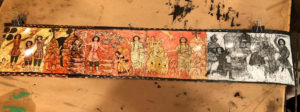
The Ezekiel panel cobbled together from various source photos and taped up for hanging in my studio
In the earlier version, below, you can see the imprimatur that led to the main elements of the composition. You can also see the panel-like divisions and the egg-shaped/Northern compositional devices.
